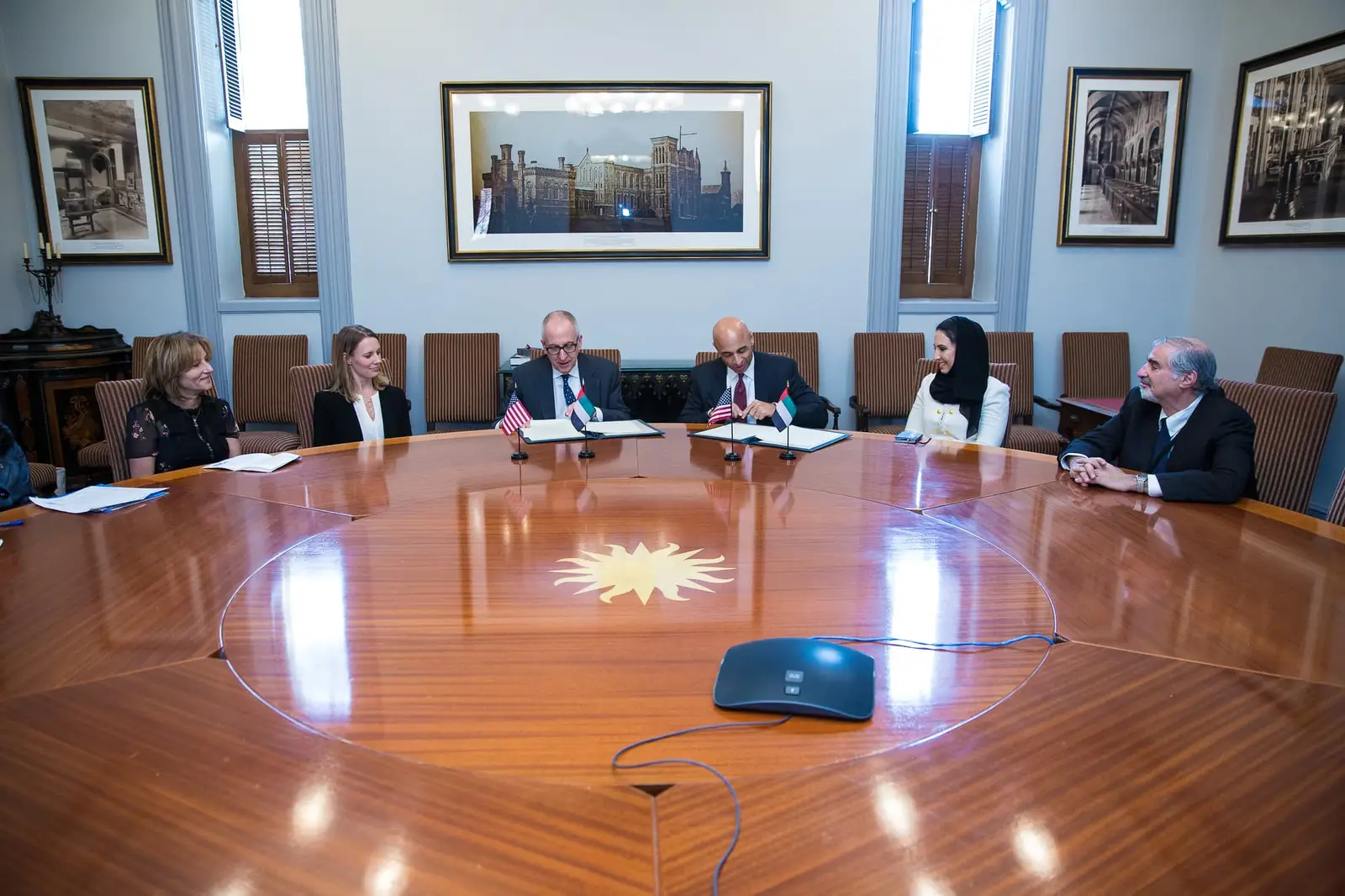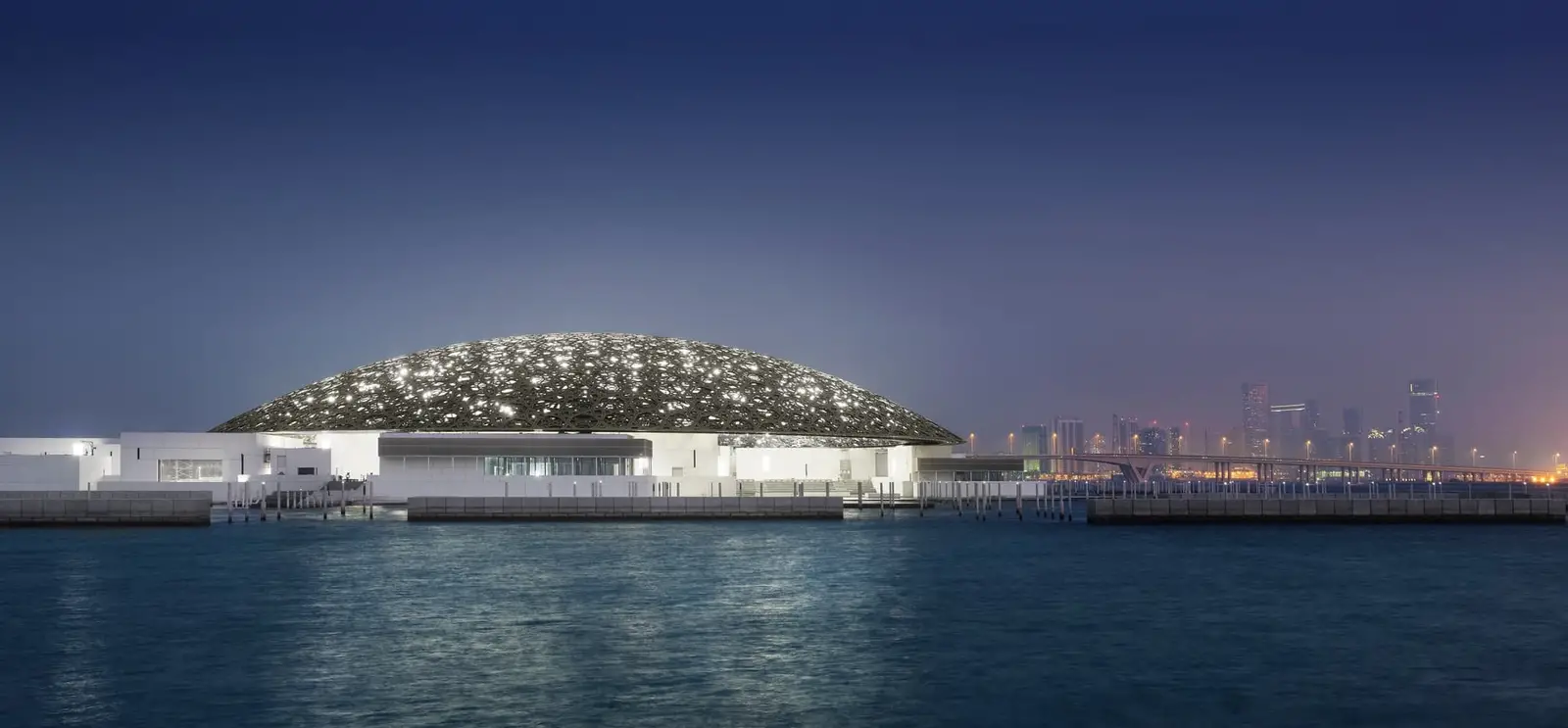
Organizations sign Memorandum of Understanding that will expand partnerships and information exchange, and explore deeper connections with UAE cultural and research institutions
WASHINGTON, DC (18 December 2017) – United Arab Emirates (UAE) Ambassador Yousef Al Otaiba and Smithsonian Secretary Dr. David J. Skorton recently signed a Memorandum of Understanding (MOU) that will enhance cultural exchanges and create new opportunities for collaboration between the Smithsonian Institution and UAE-based cultural and research organizations.
The MOU identifies multiple areas for future collaboration, including the development of knowledge-building programs, such as distance mentoring, training workshops, internships and fellowships that will support capacity-building efforts across the UAE’s cultural sector.
UAE museum directors, curators, archivists and researchers will also work with counterparts at the Smithsonian to identify opportunities to co-host events, conduct joint research and scientific programs, develop curatorial or exhibition partnerships, or publish academic articles. The MOU also identifies opportunities to assist with the development of new STEM education programs in the UAE using Smithsonian curriculum and resources.
“The UAE’s museum and cultural sector is growing at a rapid pace, and new efforts are also underway to preserve the country’s heritage and discover new knowledge. As these sectors develop, it is critical for UAE organizations to work with best-in-class partners that can share insights and best practices,” said UAE Ambassador Yousef Al Otaiba. “No other organization has the experience or breadth of expertise that the Smithsonian has, and we am thrilled to help launch this new initiative.”
The UAE and Smithsonian have a history of collaboration on research, conservation and arts programs. In 2016, researchers from the Smithsonian Conservation Biology Institute worked with the Environment Agency of Abu Dhabi to reintroduce a herd of scimitar-horned oryx into the wild. The species had been extinct in the wild since the mid-1980s. Smithsonian conservationists, researchers and curators have also exchanged information on best practices, training and museum development with UAE-based cultural organizations. This includes recent briefings with leadership from the UAE’s Zayed National Museum, which will be built on Saadiyat Island in the UAE.
“This MOU creates new opportunities for the Smithsonian and the UAE Embassy to partner on a variety of initiatives, events and other programs,” said Secretary Skorton. “Through our current collaborations—and those we will create in the future—we will build greater connections between our societies.”
The MOU comes on the heels of a visit to the UAE by a delegation that included senior Smithsonian officials, curators, and educators. The objective of the visit was to identify new projects, research and events that could highlight cultural innovation and artists from the UAE and promote cultural exchange between the two nations.
With the opening of world-class museums, such as the Louvre Abu Dhabi, galleries, historical areas, performance centers and other cultural destinations, the UAE has become a center for the arts in the Middle East. Each year, hundreds of thousands of art lovers and collectors from around the world visit the UAE for Art Dubai, Dubai Design Week, Abu Dhabi Art or the Sharjah Biennial.
“Art connects people across borders and cultures. This MOU allows the UAE Embassy to tap into the full potential of collaboration with the Smithsonian,” said Ambassador Al Otaiba. “Through this agreement, we will be able to trade best-in-class ideas and provide new opportunities to showcase rising stars from the UAE in the United States.”
Since its founding in 1846, the Smithsonian Institution has been committed to inspiring generations through knowledge and discovery. The Smithsonian is the world’s largest museum, education and research complex, consisting of 19 museums, the National Zoological Park and nine research facilities. There are 6,500 Smithsonian employees and 6,300 volunteers. There were 30 million visits to the Smithsonian in 2016. The total number of objects, works of art and specimens at the Smithsonian is estimated at nearly 154 million, of which 145 million are scientific specimens at the National Museum of Natural History. https://www.si.edu/



